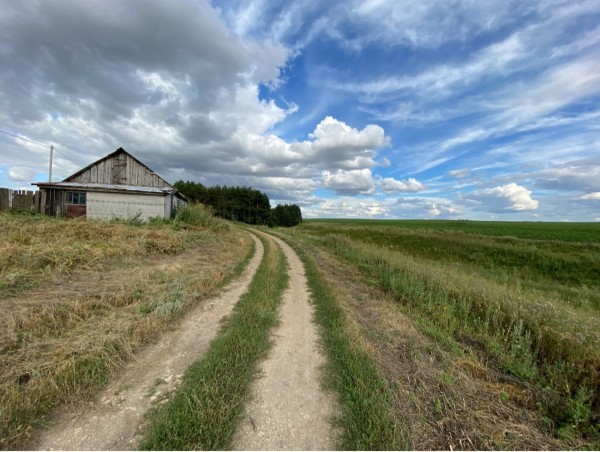The Need for BEAD…
April 4, 2025
The Communications Act of 1934 (as amended):
Sec. 254 (b) UNIVERSAL SERVICE PRINCIPLES.
(3) ACCESS IN RURAL AND HIGH COST AREAS.
Consumers in all regions of the Nation, including low-income consumers and those in rural, insular, and high cost areas, should have access to telecommunications and information services, including interexchange services and advanced telecommunications and information services, that are reasonably comparable to those services provided in urban areas and that are available at rates that are reasonably comparable to rates charged for similar services in urban areas.
In the early 1990s, when Congress was drafting reforms of the Communications Act, a group of staff from members of the Senate Commerce Committee from rural states began meeting regularly to address the divide between rural and urban service. The group, who called themselves the “Farm Team,” drafted the key provision above.
In 1996, the Telecommunications Act codified this simple yet profound principle – it was the FCC’s job to ensure that rural areas have the same access to service (including internet service access) as was available in urban areas.
The reality:
The FCC failed in this task – multiple times, under the leadership of multiple Chairmen.
What Are Reasonably Comparable Services?

For my money, since the 1996 Act, the Chairman who came closest to fulfilling the promise of Section 254(b)(3) was Ajit Pai. Pai ran two auctions to distribute funding to internet service providers in rural areas: the Connect America Fund II Auction (2018) and the Rural Digital Opportunity Fund Auction (2020). Despite some notable flaws in vetting and auction design, the auctions were successful.
The largest winners of those two auctions were Charter and the Rural Electric Cooperative Consortium. Between us, over the past five years, we have built more miles of high-quality networks, connected more rural homes, and offered more rural Americans the opportunities that come from connectivity than any federal spending program before or since.
Most important, Charter and the Rural Electric Cooperative Consortium members built networks that were comparable to networks built in urban areas – namely, networks delivering multi-gigabit per second service to the home.
That’s what every ISP builds today. AT&T, Verizon, Google Fiber, Lumen, Brightspeed, Charter, Comcast – each one builds multi-gigabit networks in urban areas.
The big questions:
Do Starlink or Amazon Kuiper offer services reasonably comparable to the services available in urban areas today? No.
Are the satellite services offered at reasonably comparable prices? No.
Do rural areas want and need Gigabit speed services? Yes. Two-thirds of our customers, all rural, subscribe to services offering 1 and 2 Gigabit per second speeds downstream and upstream.
The reality:
In some of the most rural and poorest areas of the country, our customers choose to spend their money for quality service. High-speed broadband for them is not a luxury.
The Impact on Rural America

When I hear talk about saving BEAD funds by capping the amount spent per location, I have four immediate reactions:
- Those doing the talking don’t live in rural America.
- The most successful rural economic institution – the rural electric cooperative – does not artificially limit or cap service to its members; maybe BEAD could still learn something from electric co-ops.
- Congress already capped the amount spent per location in the way it allocated funds and determined the eligible locations.
- There always will be places that are too hard to reach except by fixed wireless or satellite – typically locations off the electric grid – but that number is only a few percent of all the BEAD-eligible locations.
There is a calculable cost to leaving rural Americans behind.
- Starlink is available today throughout most, but not all, of rural America. Starlink costs $120 per month for 100/20 Mbps service.
- By comparison, Conexon and most of our electric co-op partners offer at least twice this speed for less than half the price, as well as multi-Gigabit symmetrical service for less than $100.
- Over the life of a network, if BEAD funds are not invested properly, the extra cost to a rural homeowner will be tens of thousands of dollars.
The reality:
Is $120 per month for 100/20 Mbps reasonably comparable to the prices and services available in urban America? No.
The Future in Rural America

If NTIA and the Commerce Department fail to use BEAD funds, appropriated by Congress and allocated to each state, to deliver comparable services at comparable rates to rural America – rural Americans will lose (again) and so will the taxpayer (again).
The reality:
Consumers in all regions of the Nation, including . . . those in rural . . . areas, should have access to . . services, that are reasonably comparable to those services provided in urban areas . . . at rates that are reasonably comparable to rates . . . in urban areas. — Sec 254(b)(3)
Simple. Doable.
And if NTIA and the Commerce Department don’t do their jobs, some future FCC Chairman will use his authority under Sec. 254 of the Communications Act … and start the whole process all over again.
